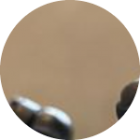How many kinds of glasses frames are there, really? Surely only five or so: round, square, rectangle, those tortoise shell ones, and sunglasses.
I’ve been wearing and losing glasses for more than a decade now, but apparently there’s more to it than that.
That’s what Inspecs (LON:SPEC) would have us think anyway. It’s a recent IPO: a vertically-integrated eyewear frames specialist that licenses, designs, patents, manufactures and distributes globally from bases around the world.
Inspecs is one of only a few companies that can offer a one-stop-shop solution to global retail chains and is well positioned to continue to take market share in a booming global eyewear market. It is also looking to complement this organic growth with acquisitions as well.
This new recruit to the market figures well according to the StockRanks, supported by good quality characteristics and relative strength.
Some IPOs are disasters, but others (Avast, for example) are just good companies that are too cheap because nobody yet knows them well enough. Avast has doubled over two years or so - perhaps there is scope for SPEC to similarly rerate.
A $130bn+ global market opportunity...
Founded in 1988 and headquartered in Bath, Inspecs is a very international UK small cap with a global opportunity - in FY19, it generated 24.9% of its revenue in the UK and 75.1% internationally. The group has a market cap of c£100m and it says the global eyewear market is worth $131bn - so plenty of growth for years to come, assuming management can execute on the group’s strategy. There is the question of just how much of this c$130bn pie applies to SPEC though.
Data from the likes of Grand View Research, Mackenzie, and Bizwit suggests this market will expand at a CAGR exceeding 7% from 2019 to 2025 as a result of:
- Increased awareness regarding eye examinations – there is a global population of 7.7 billion people, of which approximately 4.5 billion are likely to require vision correction and fewer than half have been corrected.
- A growing number of ophthalmic disorders such as myopia (short-sightedness), presbyopia (long-sightedness), and hypermetropia among ageing populations.
- Continuing improved prosperity in emerging markets leading to increased consumption of fashionable eyewear.
- Increasing awareness of the benefits of protecting the eyes with sunglasses against sun, UV and blue light, and the high potential for prescription sunglasses.
- Increased digital…


.jpg)





